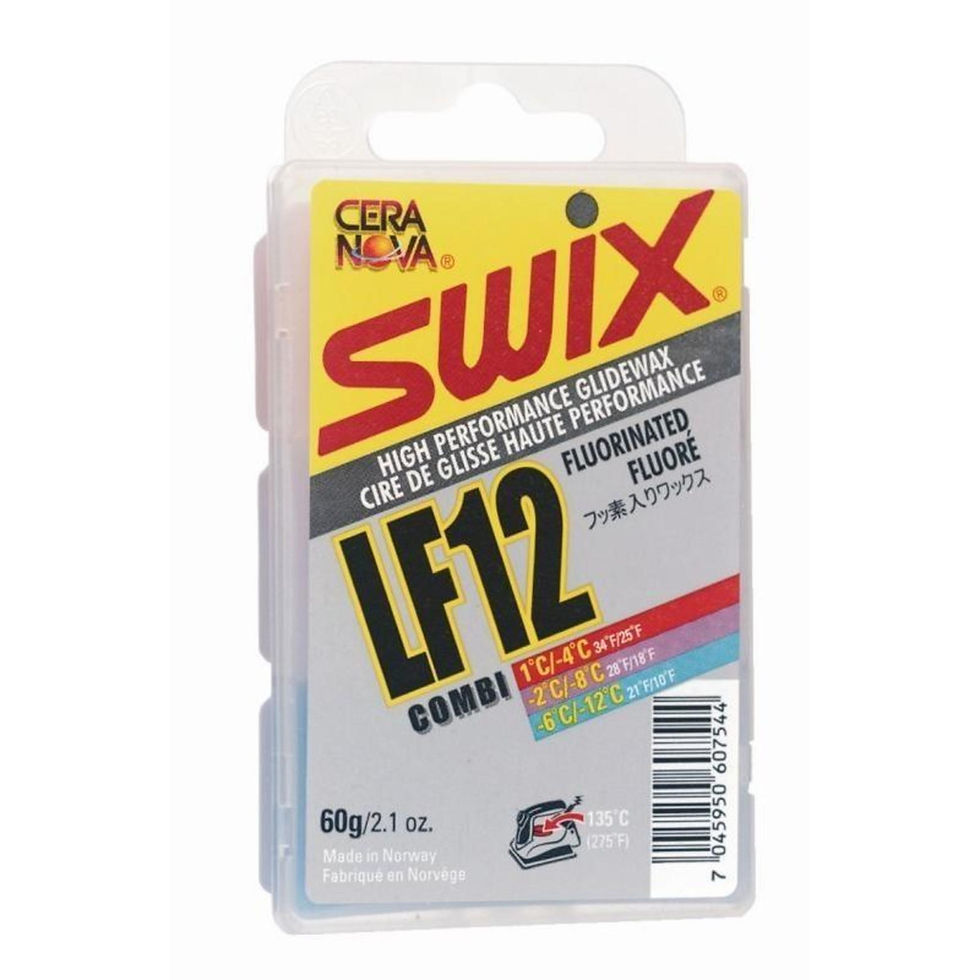Prohibition of fluorinated ski wax
- Webmaster

- Sep 15, 2021
- 3 min read
The IFSS has decided to follow the recommendations of the FIS (International Ski Association) regarding a ban on fluorinated ski wax. It has been scientifically proven that fluorinated ski wax has negative effects on the environment and human health. IFSS will monitor the development in the FIS and make further decisions accordingly.
The FIS has all products that contain C8 fluorocarbons / PFOA from all FIS events from the 2021/2022 season in accordance with EU regulation 2019/1021 ("POP regulation") and EC regulation 1907/2006 (" REACH “regulation) banned the handling of fluorinated waxes.
Taking into account the health risks and environmental concerns associated with fluorine washing, the FIS remains committed to implementing a complete fluorine ban and developing testing methods to ensure fluorine-free competitions in the future.
The introduction of a fluorine tracker that immediately detects the presence of fluorine wax on skis has been postponed to the 2021/2022 season. In the following season, the device will continue to be tested in the real performance process during the competition season without penalties.
Unfortunately, due to the Covid-19 situation, the implementation process could not be tested sufficiently in the past season. Reports on the next steps in the development of the Fluorine Tracker and the effects of the C8 ban will be presented to the council before autumn 2021.
The FIS continues to strive to develop a reliable testing method that guarantees the integrity of its competitions.
The IFSS Council encourages all member associations to inform their clubs and athletes to discourage the use of fluorine wax.

What is substance C8 and what are the health risks?
C8 was developed by the American company 3M in the 1940s. In the 1950s, the patent was bought by the American chemical giant Dupont, which has chemical plants around the world. C8 is the abbreviation for perfluorooctanoic acid, which is also known internationally as PFOA. C8 stands for the number of carbon atoms in the chemical compound. Perfluorooctanoic acid is a solid, colorless substance that belongs to the group of fluorocarbons. It is a substance that was developed by humans and does not occur in nature. The material is very durable and therefore difficult to biodegrade, as a result of which it accumulates in the human body and in the environment.
C8 was an important component in the manufacture of Teflon, a material developed by chemical giant Dupont. C8 allowed Teflon to adhere to other surfaces. Teflon, in turn, is used in a wide variety of products. Teflon has the property of being water, grease and dirt repellent, which is why it is widely used in ski wax. The most common and well-known application, however, is the non-stick coating in pans. 3M also used the C8 in the manufacture of adhesive tapes and tapes until 2002.
The fact that C8 could have harmful effects on health was evidently already evident from the manufacturer Dupont's own studies in 1961. However, it was not until the 21st century that Dupont completely stopped producing the fabric. However, the conditions associated with exposure to C8 are very serious. The substance is said to be carcinogenic (carcinogenic) and cause kidney and testicular cancer. Other conditions that can be attributed to exposure to (high) levels of C8 include thyroid disease, chronic bowel inflammation, high blood pressure, and high cholesterol. In the 1980s, studies of female workers at C8 manufacturing sites were conducted that showed birth defects in babies. In tests with C8 on mice, tumors of the liver, testicles and pancreas were observed in the exposed mice.
From 1967 to 2012, the C8 was produced for many years at Dupont's Dutch site in Dordrecht, later spun off under the name Chemours. However, it is not known whether there has been widespread dissemination of C8. In 2016, neither the licensing authorities nor the enforcement authorities recorded a measurement of the amount of C8 that Dupont emitted at that point in time or in total. Cases of illness among (former) employees and residents have not yet been (epidemiologically) researched. In 2016 it became clear that blood tests carried out in the past on employees of the C8 production facility in Dordrecht had observed very high concentrations of C8, which worried many toxicologists. Due to the growing concern of both former employees and local residents about possible high C8 exposure, RIVM intends to conduct such studies. Studies in the US show that these concerns are not entirely unfounded. Perfluorooctanoic acid has been found in the blood of 98% of Americans, with the highest and most worrying levels found in workers and residents who live near manufacturing facilities.





Comments